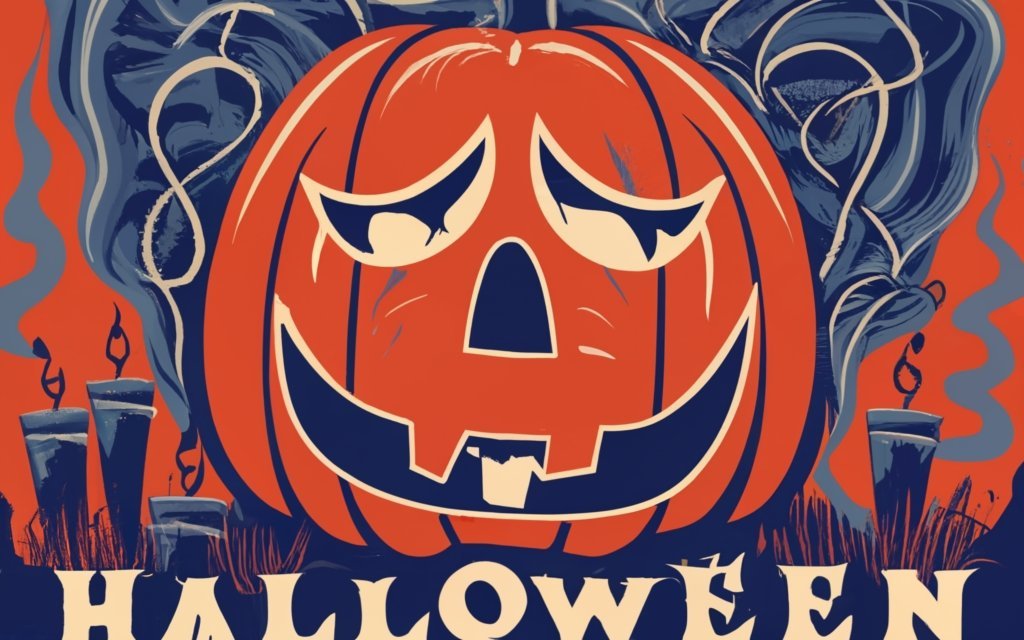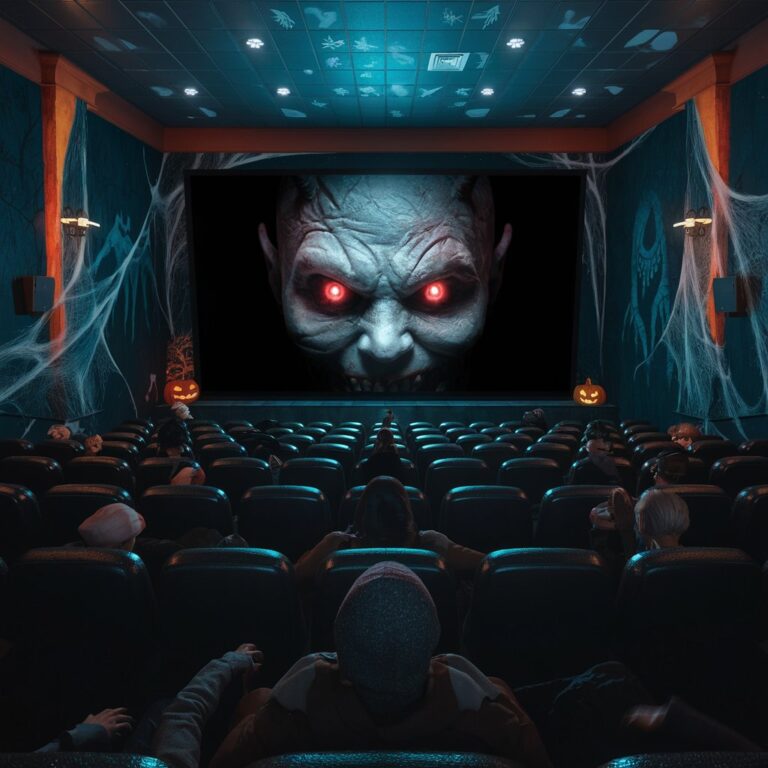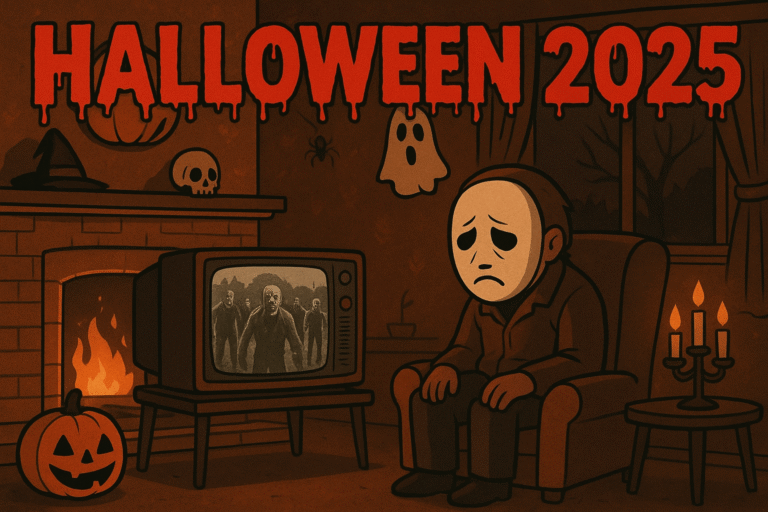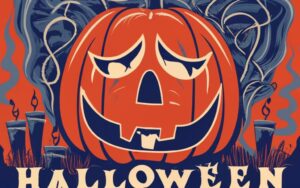
Halloween Horror 2021
As the leaves turn to fiery shades of red and orange and a chill settles in the air, Halloween approaches, and with it comes the perfect excuse to indulge in the spine-tingling, heart-pounding, and hair-raising world of horror cinema. In the spirit of the season, we’re revisiting and listing our top 10 horror films of all time to give you some great Halloween horror ideas. While the years may have passed, the classics continue to haunt our dreams and inspire new generations of filmmakers. These films have stood the test of time, delivering fear and fascination in equal measure. So, dim the lights, gather your courage, and join us on a journey through the shadows as we unveil the chilling classics that still send shivers down our spines.

10. Poltergeist
A family’s home is haunted by a host of demonic ghosts.
- Released: 1982
- Directed by: Tobe Hooper
- Cast:
- Craig T. Nelson
- JoBeth Williams
- Heather O’Rourke
- IMDB Link
Trivia:
Real Skeletons: In the film, the Freelings are horrified to discover that their house was built on a cemetery, but what’s even more chilling is that the skeletons that were used in the swimming pool scene were real human skeletons. They were reportedly cheaper to obtain than plastic ones.
The Poltergeist Curse: The “Poltergeist” film series is infamous for the so-called “Poltergeist Curse.” Several cast members from the series died prematurely, leading to superstitions that the film was cursed.
Caroline’s Age: Heather O’Rourke, who played the young girl Carol Anne, mispronounced the film’s famous line “They’re here!” as “They’re heeere!” She was only six years old at the time and Steven Spielberg liked her delivery so much that they decided to keep it in the final cut.
E.T. Reference: Director Steven Spielberg included a subtle nod to his own film “E.T. the Extra-Terrestrial.” In one scene, a child’s bedroom is filled with “Star Wars” merchandise, and “E.T.” can be seen among the stuffed animals.
The Clown Scene: The clown attack scene in the film terrified many viewers. To create this effect, the clown was actually a mechanical puppet, operated by a crew member who was inside the tree the clown was hanging from.
Rumors of Spielberg Directing: While Tobe Hooper is credited as the director, there has been speculation that Steven Spielberg, who wrote and produced the film, was heavily involved in directing many scenes. However, both Hooper and Spielberg have maintained that Hooper was the director of the film.
Curse Believers: Some members of the cast and crew believed in the “Poltergeist Curse” due to the real skeletons used in the film. They claimed that the curse was responsible for some of the film’s misfortunes.
Homage to “The Birds”: The tree that comes to life and tries to snatch Robbie is an homage to Alfred Hitchcock’s “The Birds,” which features a famous attack scene by birds.
Robbie’s Brush with Death: In one scene, Robbie gets choked by a possessed toy clown. Actor Oliver Robins, who portrayed Robbie, was genuinely choked by the prop clown and nearly lost consciousness during filming. Spielberg stopped the scene when he realized what was happening.
Sequel and Remake: “Poltergeist” spawned two sequels, “Poltergeist II: The Other Side” and “Poltergeist III.” In 2015, a remake of the original film was released.

09. Dawn of the Dead
Following an ever-growing epidemic of zombies that have risen from the dead, two Philadelphia S.W.A.T. team members, a traffic reporter, and his television executive girlfriend seek refuge in a secluded shopping mall.
- Released: 1978
- Directed by: George Romero
- Cast:
- David Emga
- Ken Foree
- Scott H. Reiniger
- IMDB Link
Trivia:
Globetrotting Production: The film was shot in several locations, including the Monroeville Mall in Pennsylvania, which served as the primary setting for the story. This iconic location is still associated with the film today.
Zombie Extraordinaire: Tom Savini, who later became a renowned special effects and makeup artist in the horror genre, not only provided the special effects for the film but also played the role of “Blades,” a biker zombie.
Biker Gang: The aggressive and menacing biker gang in the film was played by a real motorcycle club called the “Latent Image.” They were not professional actors and were allowed to keep any items they destroyed on set.
Argento’s Influence: The Italian filmmaker Dario Argento, a friend of George A. Romero, helped secure financing for the film’s international distribution and also had a hand in editing the European version of the film. He is credited as one of the producers.
Zombies on Break: Some of the zombie extras spent their downtime in a room at the mall that was set up like a “zombie lounge,” complete with soft drinks and snacks. They even had their own “zombie hotline” to coordinate their movements on set.
Ad Libbed Scenes: Many of the lines and actions in the film were improvised by the actors, adding to the realistic and chaotic atmosphere. Some of the best moments in the film came from spontaneous decisions by the cast.
Critical Reception: While “Dawn of the Dead” is now considered a classic, it initially received mixed reviews. However, its reputation has grown over the years, and it is often regarded as one of the greatest zombie films ever made.
Satirical Themes: The film is not just a horror movie but also a social commentary on consumerism and materialism. The characters take refuge in a mall, which was meant to highlight the mindless pursuit of consumer goods.
Alternate Titles: The film had various titles in different countries. In Italy, it was released as “Zombi,” and in the United Kingdom, it was known as “Zombie: Dawn of the Dead.”
Influence on the Genre: “Dawn of the Dead” had a significant influence on the zombie genre and is often cited as one of the key films that popularized the concept of the modern, flesh-eating zombie.
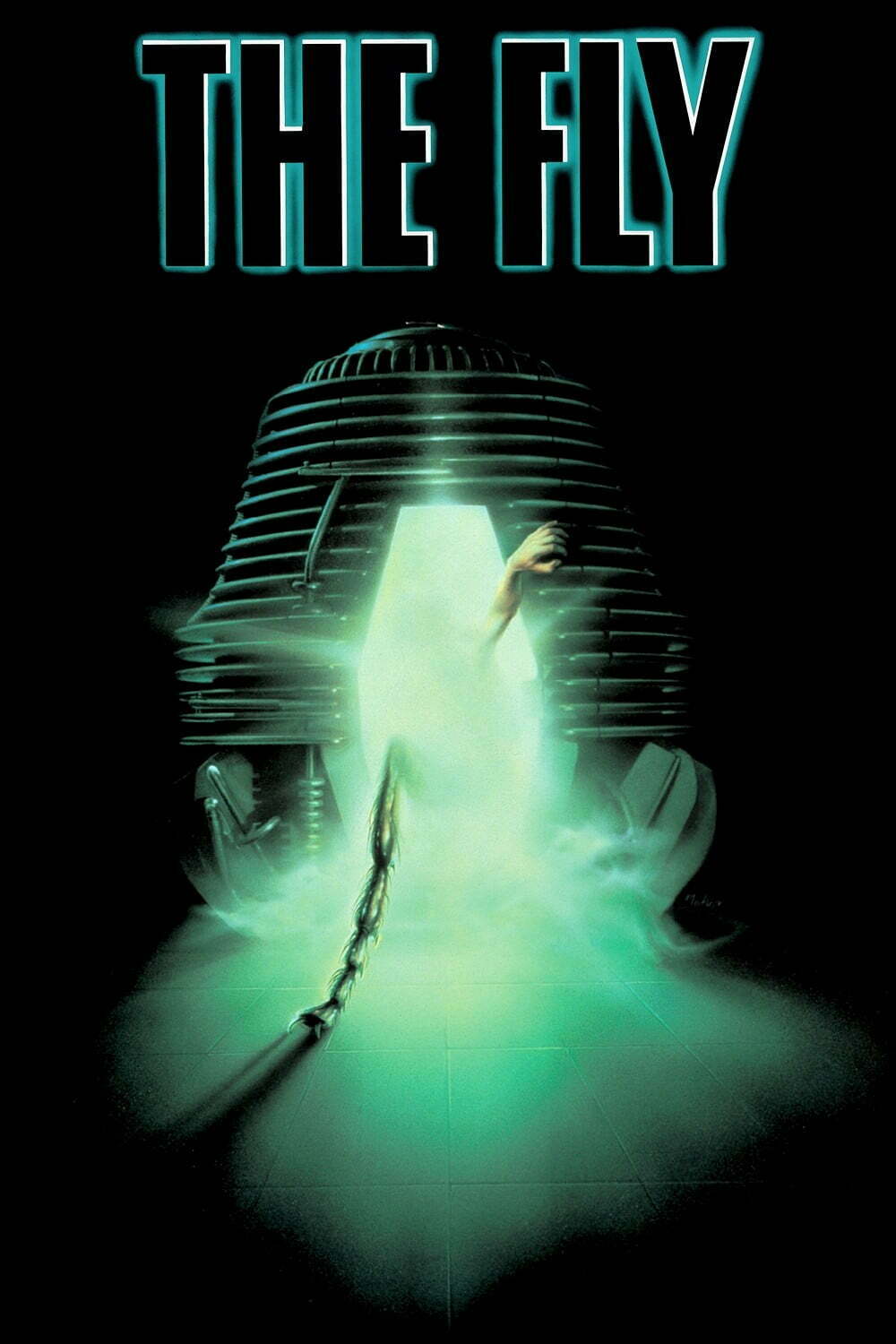
08. The Fly
A brilliant but eccentric scientist begins to transform into a giant man/fly hybrid after one of his experiments goes horribly wrong.
- Released: 1986
- Directed by: David Cronenberg
- Cast:
- Jeff Goldblum
- Genna Davis
- John Getz
- IMDB Link
Trivia:
Cronenberg’s Unique Take: Director David Cronenberg, known for his body horror themes, brought his unique style to “The Fly,” emphasizing the grotesque physical transformation of the main character. This approach set it apart from the original film.
Practical Effects: The film’s gruesome special effects were achieved through a combination of practical effects, makeup, and animatronics. Jeff Goldblum’s transformation into Brundlefly is one of the most iconic aspects of the film.
Oscar-Winning Makeup: Chris Walas, who created the makeup and creature effects, won an Academy Award for Best Makeup for his work on “The Fly.” The effects were groundbreaking at the time.
Deleted Fly Creatures: In the original script, there were more scenes featuring various insect-like creatures that Jeff Goldblum’s character had fused with. Due to budget constraints, many of these scenes were cut from the final film.
Telepod Sounds: The distinctive teleportation pods in the film make a distinctive noise. This sound was created by dragging a metal coat hanger across piano strings and then reversing the sound.
The Famous Barf Scene: There’s a memorable scene in the film where Seth Brundle, played by Jeff Goldblum, demonstrates his newfound abilities by vomiting on his food and dissolving it. The effect was created using oatmeal and other substances.
Jeff Goldblum’s Commitment: Jeff Goldblum’s performance as Brundlefly required him to spend hours in the makeup chair, often starting at 4 a.m. He remained committed to the role, even when the makeup process was challenging and uncomfortable.
The Arm Wrestling Scene: There’s a famous arm-wrestling scene where Brundlefly displays his increased strength. In this scene, the character’s physical transformation is strikingly evident.
The Brundle Museum of Natural History: In the film, Seth Brundle creates a museum-like display of his transformation throughout the movie. It’s a gruesome and chilling touch that adds to the horror of the story.
Critical Acclaim: “The Fly” received critical acclaim and is often regarded as one of the best horror films of the 1980s. It’s celebrated for its blend of horror and tragic romance, along with its outstanding performances.

07. Alien
The crew of a commercial spacecraft encounter a deadly lifeform after investigating an unknown transmission.
- Released: 1979
- Directed by: Ridley Scott
- Cast:
- Sigourney Weaver
- Tom Skerritt
- John Hurt
- IMDB Link
Trivia:
Original Title: The film’s original title was “Star Beast” before it was changed to “Alien.” The change was suggested by writer Dan O’Bannon.
H.R. Giger’s Design: Swiss artist H.R. Giger, known for his surreal and nightmarish artwork, was responsible for the design of the alien creature and the spacecraft. His biomechanical and unsettling designs contributed significantly to the film’s unique visual style.
Real Bones: The eerie set design in the derelict spaceship scenes included actual animal bones and carcasses to create an authentic, unsettling atmosphere.
Ripley’s Gender-Neutral Character: Sigourney Weaver’s character, Ellen Ripley, was originally written as a male character. However, the character’s gender was left open, and Weaver was eventually cast in the role.
No Rehearsals: Director Ridley Scott chose not to have rehearsals with the cast to create a sense of unease and spontaneity. The actors often didn’t know when the alien would appear, which added to their genuine reactions on screen.
Jones the Cat: The ship’s cat, Jones, was played by several different cats to ensure continuity, but one cat, named “Jonesy,” was used for most of the scenes.
The Chestburster Scene: The famous chestburster scene was shot in one take. The actors’ shocked reactions were genuine, as they had no idea how intense the scene would be.
The Android’s Milk: In the scene where Ash (played by Ian Holm) malfunctions, he spews white fluid. The substance used was actually milk and not some artificial liquid, which added to the disturbing effect.
Ash’s Head: The severed head of the android Ash was created by using a mold of Ian Holm’s face, which allowed the crew to manipulate it in a lifelike manner.
Sound Effects: The sounds of the alien’s movements and vocalizations were created using various techniques, including squishing pasta and rubber gloves, as well as mixing animal noises.
Unscripted Dialogue: Much of the dialogue in the film was unscripted, with the actors improvising and reacting naturally to the unfolding events.
Sequel Setup: The film’s conclusion left room for a sequel, but the filmmakers had no guarantee that a sequel would be made. Fortunately, “Aliens” was produced several years later.
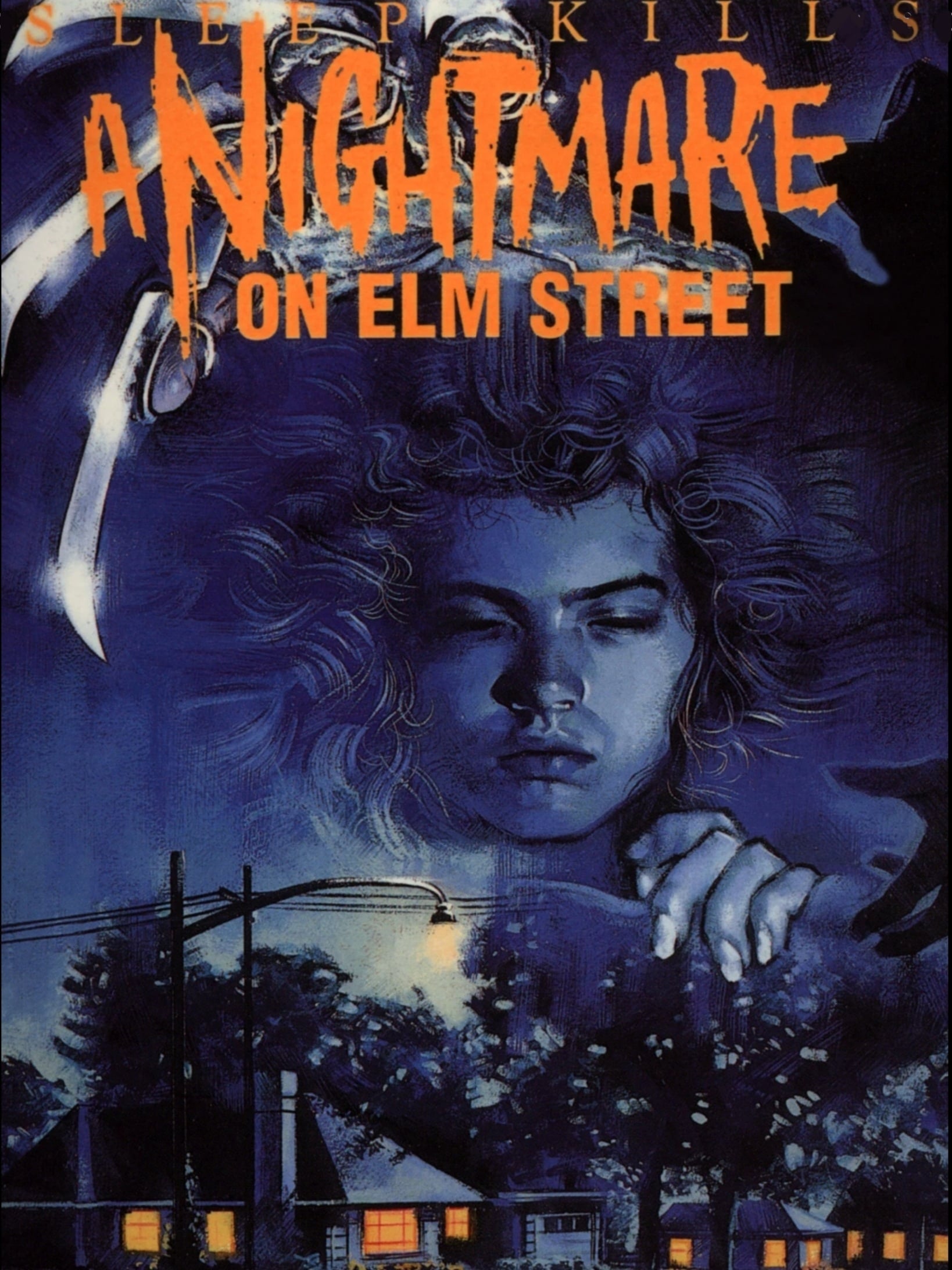
06. A Nightmare on Elm Street
Teenager Nancy Thompson must uncover the dark truth concealed by her parents after she and her friend’s become targets of the spirit of a serial killer with a bladed glove in their dreams, in which if they die, it kills them in real life.
- Released: 1984
- Directed by: Wes Craven
- Cast:
- Heather Lagenkamp
- John Saxon
- Jonny Depp
- IMDB Link
Trivia:
Inspiration for Freddy Krueger: Director Wes Craven got the idea for the film after reading a series of articles in the LA Times about young Asian men who died in the middle of nightmares. This inspired the concept of a killer who attacks people in their dreams.
Freddy’s Iconic Sweater: Freddy Krueger’s red and green striped sweater was chosen because those colors are known to be the most clashing to the human retina. The character’s glove was also designed to be unsettling with its razor-sharp blades.
Johnny Depp’s First Role: “A Nightmare on Elm Street” marked Johnny Depp’s film debut. He played the character Glen, who meets a gruesome fate in the film.
Gory Bathtub Scene: One of the film’s most memorable scenes involves a gory blood geyser emerging from Nancy’s bathtub. This effect was achieved by turning the room upside down and filming the scene that way.
The Infamous House: The Elm Street house used in the film became an iconic horror location. It was a real house located in Los Angeles, and it attracted many fans and tourists over the years.
Real Fire Stunts: The famous hallway scene where Nancy is pulled into the small wall in her bedroom was achieved by having a real actor stuntwoman, with a fireproof suit on, perform the stunt.
The Meryl Streep Connection: The film’s lead actress, Heather Langenkamp, would later appear in “A Nightmare on Elm Street 3: Dream Warriors.” Notably, this film also featured a young Patricia Arquette, who would go on to have a successful acting career.
Influence on Wes Craven: Wes Craven’s creation of Freddy Krueger and the film’s success had a major impact on his career and became one of his most iconic works. It helped solidify him as a master of horror.
Real Nursery Rhyme: The nursery rhyme that Freddy’s character uses in the film, “One, Two, Freddy’s coming for you,” was inspired by a real playground chant. It added to the eerie and memorable quality of the character.
Box Office Success: “A Nightmare on Elm Street” was made on a relatively small budget but went on to become a massive box office success, grossing over $25 million in the United States.
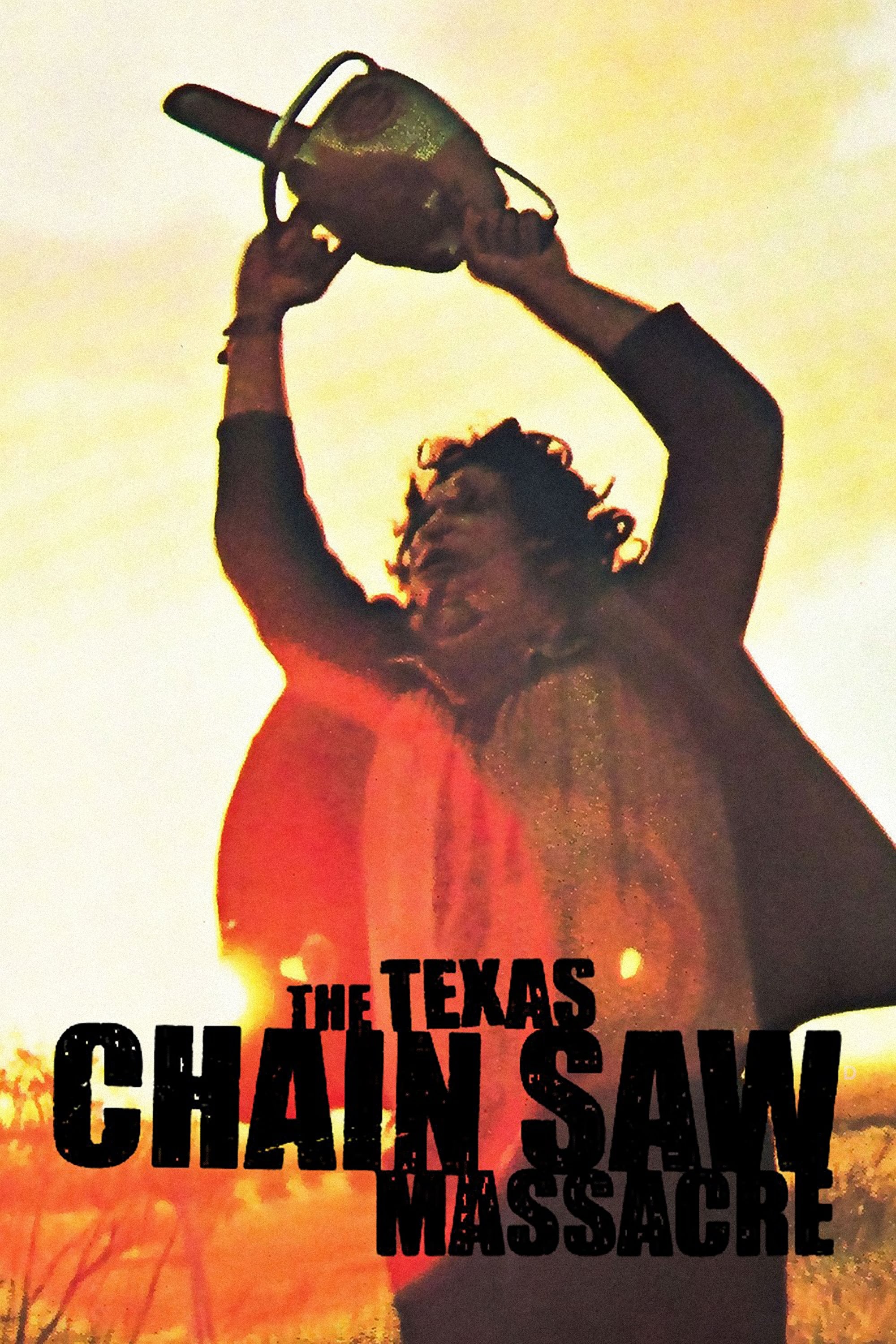
05. The Texas Chainsaw Massacre
Five friends head out to rural Texas to visit the grave of a grandfather. On the way they stumble across what appears to be a deserted house, only to discover something sinister within. Something armed with a chainsaw.
- Released: 1974
- Directed by: Tobe Hooper
- Cast:
- Marilyn Burns \
- Gunnar Hansen
- Paul A. Partain
- IMDB Link
Trivia:
Inspired by True Events: While not a true story, the film was inspired by the real-life crimes of Ed Gein, a Wisconsin serial killer and body snatcher, who was also the inspiration behind other famous horror films like “Psycho” and “The Silence of the Lambs.”
Low Budget Production: The film was made on a shoestring budget of around $140,000, and the cast and crew often worked under harsh conditions, enduring extreme heat during the Texas summer.
Intense Auditions: The casting process was rigorous, and the actors went through challenging auditions. Gunnar Hansen, who played Leatherface, was cast for his imposing physical presence, and he prepared for the role by visiting a mental hospital.
Actual Decomposing Meats: The production’s tight budget led to the use of real animal carcasses in various scenes. The intense Texas heat made the set unpleasantly smelly.
Chainsaw Sounds: The iconic sound of Leatherface’s chainsaw was created using a mixture of sounds, including a idling Volkswagen Beetle engine. The noise was eerie and unsettling.
Lack of Blood: The film contains surprisingly little gore, considering its reputation. Tobe Hooper used quick cuts, sound effects, and suggestion to create the illusion of violence without actually showing much on screen.
No Sequel Intention: The filmmakers didn’t initially intend for a sequel, as the film’s grim ending made it seem unlikely. However, the film’s success led to a series of sequels, prequels, and reboots.
Influence on the Genre: “The Texas Chainsaw Massacre” is often regarded as one of the most influential horror films of all time and is considered a pioneer of the slasher subgenre.
Low-Paid Actors: The cast and crew were paid very little for their work on the film, and some even agreed to a share of the film’s profits, which turned out to be a wise decision as the movie became a cult classic.
Marilyn Burns’ Real Screams: Marilyn Burns, who portrayed the character Sally Hardesty, did not require much direction to scream in the film, as the conditions on set and the intensity of the scenes elicited real and raw reactions.

04. Hellraiser
A woman discovers the newly resurrected, partially formed, body of her brother-in-law. She starts killing for him to revitalize his body so he can escape the demonic beings that are pursuing him after he escaped their sadistic underworld.
- Released: 1978
- Directed by: Clive Barker
- Cast:
- Andrew Robinson
- Clare Higgins
- Ashley Laurence
- IMDB Link
Trivia:
Based on a Novella: The film is based on Clive Barker’s novella titled “The Hellbound Heart.” Barker himself adapted the novella into the screenplay and directed the movie.
Iconic Puzzle Box: The film introduces the Lament Configuration puzzle box, which serves as a portal to another dimension. The design of the puzzle box has become one of the most recognizable and iconic elements of the “Hellraiser” series.
The Cenobites: The grotesque and sadomasochistic beings from another dimension, known as the Cenobites, are some of the most memorable characters in the film. The term “cenobite” originally referred to a member of a religious order, and Barker’s use of the term adds a dark twist.
Practical Effects: The film is known for its impressive practical effects, which brought the nightmarish creatures and gore to life. This includes the elaborate makeup and prosthetics used for the Cenobites.
The Infamous “Clapperboard”: The clapperboard used on set of “Hellraiser” featured an illustration of Pinhead, one of the film’s most iconic Cenobites, instead of the typical markings. This added to the uniqueness of the production.
Creating Pinhead: Actor Doug Bradley portrayed Pinhead, one of the lead Cenobites. The character’s distinctive look, featuring nails embedded in his head, was created by makeup artist Bob Keen.
Feminist Themes: Clive Barker infused “Hellraiser” with feminist themes and explored the complex dynamics of desire and pain. The character of Julia, played by Clare Higgins, has been analyzed for her complex role in the story.
The Centipedes Were Not Always Cenobites: In early drafts of the screenplay, the Cenobites were referred to as “the Centipedes.” The name was changed later, and the Cenobites became one of the film’s most iconic elements.
Frank’s Rebirth: In the film, Frank Cotton’s resurrection is a gruesome process. To create this effect, actor Sean Chapman had to sit in a cold, damp attic in very little clothing for hours, creating a chilling and authentic scene.
Lack of Explicit Gore: Despite its reputation, “Hellraiser” contains surprisingly little explicit gore. Clive Barker chose to focus on the psychological and emotional horror aspects of the story.
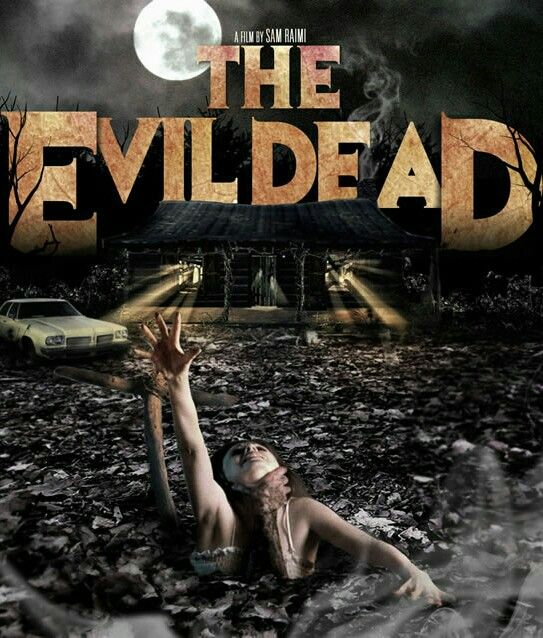
03. The Evil Dead
Five friends travel to a cabin in the woods, where they unknowingly release flesh-possessing demons.
- Released: 1981
- Directed by: Sam Rami
- Cast:
- Bruce Campbell
- Ellen Sandweiss
- Betsy Baker
- IMDB Link
Trivia:
Low Budget Production: “The Evil Dead” was famously low-budget, with most of the funding coming from family and friends. The cast and crew often slept in the cabin where the film was shot.
A Family Affair: The film was a collaborative effort involving a group of friends and family members. Sam Raimi directed, Bruce Campbell starred, and Robert Tapert produced the film. The group, known as the “Michigan Mafia,” would later go on to work together on other projects.
DIY Special Effects: The film’s special effects were achieved using creative, do-it-yourself methods, including the use of homemade blood (mainly Karo syrup and food coloring) and ingenious camera tricks.
Banned in Several Countries: “The Evil Dead” was considered so gory and disturbing at the time that it was banned in several countries. It gained a reputation as a “video nasty” in the United Kingdom.
“The Book of the Dead”: The ominous and ancient book featured in the film is referred to as the “Necronomicon Ex-Mortis.” It plays a central role in summoning the evil forces.
Cameo Appearance: Director Sam Raimi made a cameo in the film as a character who gets attacked by a tree. The scene was a reference to a similar incident in “The Texas Chainsaw Massacre.”
Bruce Campbell’s Rigorous Performance: Bruce Campbell, who portrayed the main character Ash Williams, underwent intense physical and psychological stress during the making of the film. He performed many of his stunts himself.
Evil POV Shots: The film used distinctive and unsettling “evil POV” shots to create a sense of being pursued by an unseen malevolent force. These shots became a signature element of the series.
Stop-Motion Animation: Stop-motion animation was used for some of the film’s supernatural effects, including the disintegration of the undead. The technique added to the eerie and surreal atmosphere of the movie.
Sequels and Legacy: “The Evil Dead” spawned two sequels, “Evil Dead II” and “Army of Darkness,” as well as a successful TV series called “Ash vs Evil Dead.” The franchise has garnered a dedicated cult following.

02. The Exorcist
When a teenage girl is possessed by a mysterious entity, her mother seeks the help of two priests to save her daughter.
- Released:1973
- Directed by: William Friedkin
- Cast:
- Ellen Burstyn
- Max Von Sydow
- Linda Blair
- IMDB Link
Trivia:
Based on a Novel: The film is based on the novel of the same name by William Peter Blatty, who also wrote the screenplay. Blatty was inspired by a real-life exorcism case that took place in 1949.
Directorial Challenges: Director William Friedkin was known for his intense and sometimes unorthodox methods of directing. To elicit genuine fear and discomfort from the actors, he often fired gun blanks on set to startle them.
Regan’s Spinning Head: One of the most iconic scenes in the film features Regan’s head spinning 360 degrees. This effect was achieved using a life-sized dummy of the actress, Linda Blair, with a rotating head.
The Sound of the Devil: The eerie, guttural sounds that Regan makes were created by blending recordings of pigs being led to slaughter, which added to the unsettling and otherworldly atmosphere of the film.
Delayed Release: The film’s release was delayed by several months due to production issues, including problems with the mechanical effects and concerns over the intense content.
Tied to a Bed: During the exorcism scenes, Linda Blair was actually tied to the bed to prevent her from being thrown off during her violent convulsions. These restraints led to bruises on her wrists.
Ellen Burstyn’s Injury: Actress Ellen Burstyn, who played Chris MacNeil, suffered a permanent spinal injury when she was pulled to the floor by a wire during a scene. The painful reaction in the film is real.
Cinematic Impact: “The Exorcist” is often cited as one of the most terrifying films ever made and is known for its intense and controversial content, pushing the boundaries of horror in cinema.
Box Office Success: Despite its controversial and frightening content, “The Exorcist” was a massive commercial success, becoming one of the highest-grossing films of its time.
Oscar-Winning: The film was nominated for ten Academy Awards and won two: Best Adapted Screenplay for William Peter Blatty and Best Sound Mixing. It was also nominated for Best Picture and Best Director.
Sequels and Spin-offs: “The Exorcist” spawned several sequels and spin-off films, as well as a television series, all of which explored the enduring horror of demonic possession.
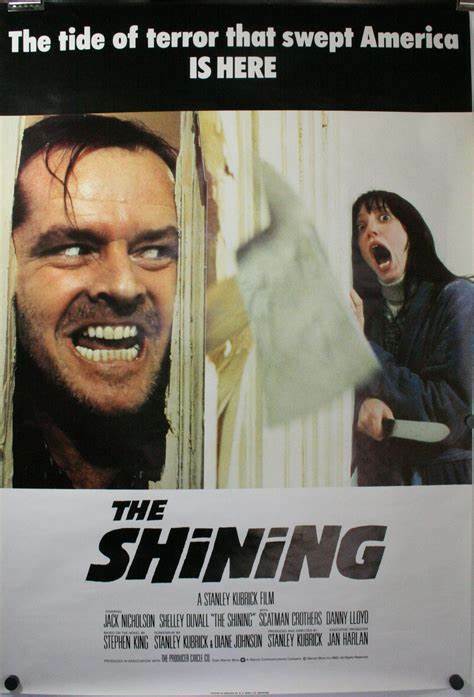
01. The Shining
A family heads to an isolated hotel for the winter where a sinister presence influences the father into violence, while his psychic son sees horrific forebodings from both past and future.
- Released: 1980
- Directed by: Stanley Kubrick
- Cast:
- Jack Nicholson
- Shelley Duvall
- Danny Lloyd
- IMDB Link
Trivia:
Kubrick’s Perfectionism: Stanley Kubrick was known for his meticulous attention to detail and perfectionism. The film’s production was renowned for its extensive number of takes for certain scenes. For example, the “Here’s Johnny!” scene took 60 doors and three days to film.
Stephen King’s Disapproval: Stephen King, the author of the novel, was not entirely pleased with Kubrick’s adaptation of his work. He felt that the film omitted important elements from the book and that Jack Nicholson’s portrayal of Jack Torrance was too crazy from the start.
A Different Hedge Maze: In the novel, the climax takes place in a topiary animal garden, but in the film, it’s set in a hedge maze. The change was made because Kubrick felt the topiary animals wouldn’t be visually effective.
Room 237: The mysterious Room 237 in the Overlook Hotel was changed to Room 217 in the film to avoid potential complaints from the real Timberline Lodge, where exterior scenes were shot.
Wendy’s Torrance: In the novel, Wendy Torrance is a strong and resilient character. In the film, Stanley Kubrick portrayed her as more fragile and hysterical, which contributed to Shelley Duvall’s challenging experience during production.
Elevator of Blood: The famous elevator of blood scene was achieved by using a real elevator filled with thousands of gallons of fake blood, which was released in one go. It took several takes to get the shot right.
Kubrick’s Misleading Notes: Kubrick gave conflicting directions to the actors to create a sense of confusion and unease. For example, he told Danny Lloyd (who played Danny Torrance) that the film was a drama, not a horror film, to protect the young actor from the intense scenes he was involved in.
Overlook Hotel Layout: The hotel’s layout in the film doesn’t make logical sense, with rooms and hallways that don’t match up with the architecture. This was intentional to create a sense of disorientation.
Native American Imagery: The film incorporates several references to Native American culture, such as the carpet pattern and the Calumet baking powder cans. Some viewers interpret these references as a commentary on the genocide of Native Americans.
The Typewriter: Jack Torrance’s typewriter, a German-made Adler, is a rare model and was chosen for its distinctive and haunting sound. It added to the atmosphere of the film.
The Shining takes the no.1 spot, its celebrated for its iconic performances, eerie atmosphere, and the enduring mystery surrounding its meanings and symbolism. It’s considered one of the greatest horror films ever made and continues to captivate audiences around the globe.
Honorable Mentions:
This top 10 was very hard to curate as there are so many fantastic horror movies, it’s only right I give a few mentions to the ones that almost made it to the list:
- “Psycho” (1960) – Alfred Hitchcock’s iconic thriller is known for its famous shower scene and its influence on the genre.
- “Night of the Living Dead” (1968) – George A. Romero’s zombie classic revolutionized the genre.
- “Rosemary’s Baby” (1968) – Roman Polanski’s suspenseful film explores themes of paranoia and occultism.
- “The Thing” (1982) – John Carpenter’s classic science fiction horror film.
Conclusion
As the cobwebs settle and the jack-o’-lanterns flicker out, our journey through the top 10 horror films of all time comes to a close. These masterpieces of fear have shown us that true horror endures, transcending eras and generations. They remind us that the most terrifying monsters are not the ones hiding under our beds but the ones lurking within our own psyche.
We hope this list has rekindles your love for horror or inspires you to explore the genre further. From the heart-pounding suspense of “The Texas Chainsaw Massacre” to the supernatural terror of “The Exorcist” and the chilling isolation of “The Shining,” these films continue to shape the nightmares and dreams of all who dare to watch. Let these classics remind you that the best scares are the ones that stay with you long after the credits roll. Until our next chilling adventure, sweet nightmares, and farewell from all of us at Meganano!
Happy Halloween Folks!

